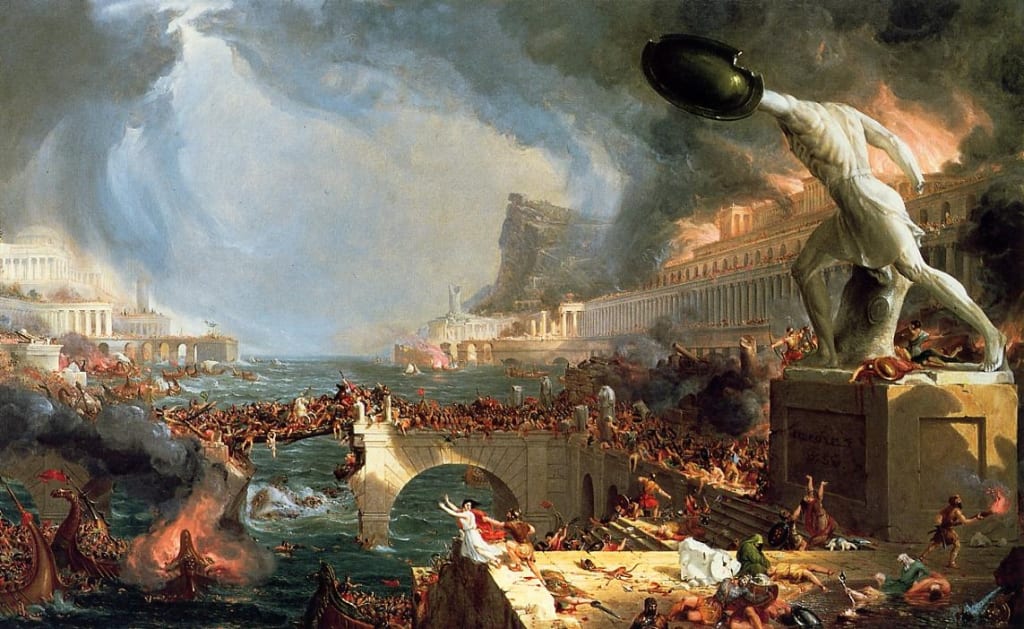The origin of vandalism?
The Vandals Tribe, who were they?

Introduction
The term "vandalism" finds its origins in the annals of history, specifically associated with the notorious Germanic tribe known as the Vandals. Renowned for their pivotal role in the decline of the Western Roman Empire, the Vandals left an indelible mark on the collective memory of civilizations. In the tumultuous early 5th century, they brazenly invaded the illustrious city of Rome, leaving a trail of devastation and pillage in their wake.
Their audacious sack of Rome reverberated throughout the ages, forever etching the Vandals' name into the annals of notoriety. The very term "vandalism" emerged as a lexical offspring, drawing inspiration from their wanton acts of deliberate property destruction. A distinct reputation as ruthless invaders, renowned for their penchant for vandalizing and looting cities, became firmly attached to the Vandals' legacy.
Meaning of Vandalism
As the tapestry of time unfolded, the term "vandalism" expanded its semantic borders, encompassing a broader spectrum of intentional property damage. It assumed a mantle representing acts that brazenly flout the sanctity of cultural heritage or dismiss the historical value embedded within objects and locales.
Why Vandals?
While the Vandals themselves may not bear sole responsibility for the genesis of destructive behaviors, their audacious sack of Rome and ensuing notoriety played an influential role in the association of their name with the concept of vandalism. Henceforth, the term became the designated nomenclature to encapsulate acts of intentional property damage, resonating throughout history as a reminder of the reckless disregard for the cultural tapestry of our shared human story.
History and Origins of the Vandal Tribe

The Vandal tribe, an ancient Germanic people, played a significant role in European history during the late Roman Empire. Originating in Scandinavia, they migrated southward and settled in present-day Poland. In the 5th century CE, the Vandals made a momentous migration across the Rhine River, penetrating the Roman Empire.
Culture and Traditions of the Vandal Tribe:
The Vandal tribe possessed a distinctive culture and cherished their traditions. Renowned for their fierce warrior culture and exceptional horsemanship, they had a hierarchical society led by influential chieftains. Their religious beliefs encompassed a polytheistic faith, worshipping various deities and spirits.
Influences and Impact of the Vandal Tribe:
The Vandals left an indelible mark on the regions they encountered during their migration and conquests. Notably, they established a powerful Vandal Kingdom in North Africa, with Carthage as its capital. Under King Genseric's leadership, the Vandals posed a formidable threat to the Western Roman Empire, engaging in conflicts with both Romans and other Germanic tribes.
Famous Figures and Leaders of the Vandal Tribe:
Several noteworthy figures emerged from the Vandal tribe, leaving an enduring legacy. King Genseric, renowned for his military prowess, led the Vandals during their conquest of North Africa. His strategic brilliance solidified the Vandal Kingdom's dominance in the region.
Vandal Tribe Art and Symbols:
Although the Vandals lacked an extensive artistic tradition, their material culture reflects influences from the diverse cultures they encountered. Art and symbols of the Vandal tribe often incorporated elements from Roman, Germanic, and North African cultures. Their artwork featured intricate patterns, animal motifs, and religious symbols.
Vandal Tribe in Modern Times:
As an independent political entity, the Vandal tribe ceased to exist after their conquest by the Byzantine Empire in the 6th century CE. However, their memory lives on through historical accounts and archaeological remains. The Vandals continue to captivate the interest of historians, scholars, and enthusiasts fascinated by the ancient world.
Vandal Tribe Tourism and Travel:
Certain regions associated with Vandal history, such as Carthage in Tunisia, attract tourists and travelers intrigued by exploring the remnants of their civilization. These sites offer valuable insights into Vandal culture and their impact on the territories they once inhabited.
Preservation and Conservation of Vandal Tribe Heritage:
Preserving and conserving the Vandal tribe's heritage is crucial for understanding the complexities of European history. Through archaeological excavations, research endeavors, and the protection of historical sites associated with the Vandals, we can enhance our knowledge and appreciation of their culture and influence.
Conclusion: The Legacy of the Vandal Tribe
The Vandal tribe's legacy encompasses military conquests, cultural influences, and historical significance. Their migration, establishment of a powerful kingdom, and clashes with the Roman Empire mark a significant chapter in European history. Today, their memory endures through the remnants of their civilization, reminding us of the intricate tapestry of ancient cultures and the lasting impact of the Vandal tribe.
About the Creator
Écrivain Placard
Curious reader and researcher, always exploring the lesser-known corners of the world. Sharing obscure findings and insights with fellow knowledge-seekers. Never satisfied with the obvious, always digging deeper for the truth.






Comments
There are no comments for this story
Be the first to respond and start the conversation.